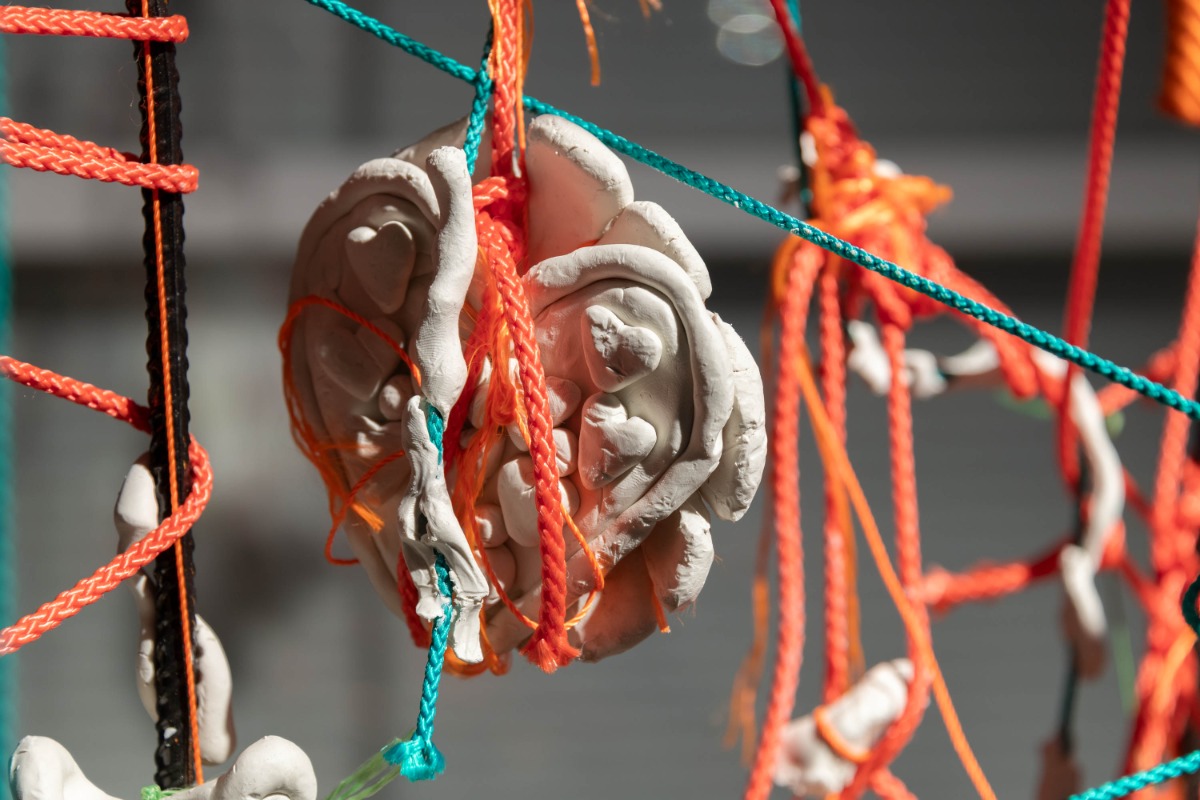
Superorganism as Diverse Unity
The major exhibition Superorganism at Tartu's Aparaaditehas is open until November 23 as part of the “Tartu – European Capital of Culture 2024” program
Superorganism is an international exhibition curated by 8 emerging and professional curator’s team from different European countries merged by the Magic Carpets platform. It delves into the concept of the superorganism, a term originally coined to describe social insect colonies functioning as a unified entity. The exhibition expands this concept to encompass diverse biological systems and explores its broader implications for society and the environment.
Within the context of the exhibition, the superorganism represents multiple layers of meaning and metaphors. It embodies a utopian ideal of unity and harmony within a community, while also raising questions about the impact of collective existence on individuality. The exhibition reflects on the values of Tartu – the European Capital of Culture 2024—uniqueness, sustainability, awareness, and co-creation—and invites viewers to consider a shared ground of collective existence.
Vita Malahova. Body of Many. Photo: Marje Eelma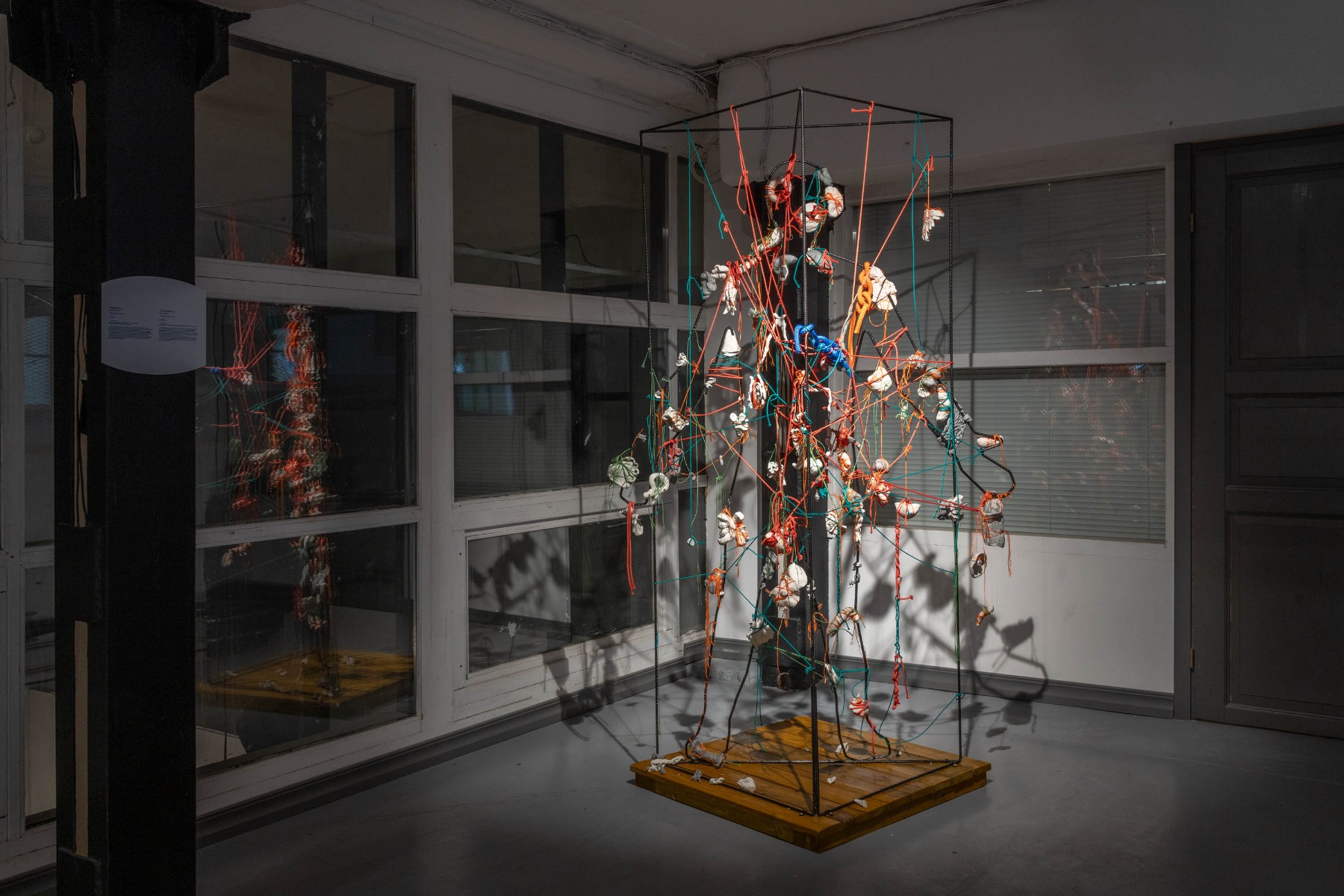
The exhibition showcases diverse artworks by 25 emerging artists, who have participated in the Magic Carpets residencies in 2021-2024, organized by Magic Carpets partners across 17 different European countries. Their works will range from photography and installations to performances and videos. Additionally, the exhibition includes documentation materials representing the results of approximately 150 other residencies.
Janko Bozovic, Thomas Durand, Pauline Roue. Soundtrack of an Island. Photo: Marje Eelma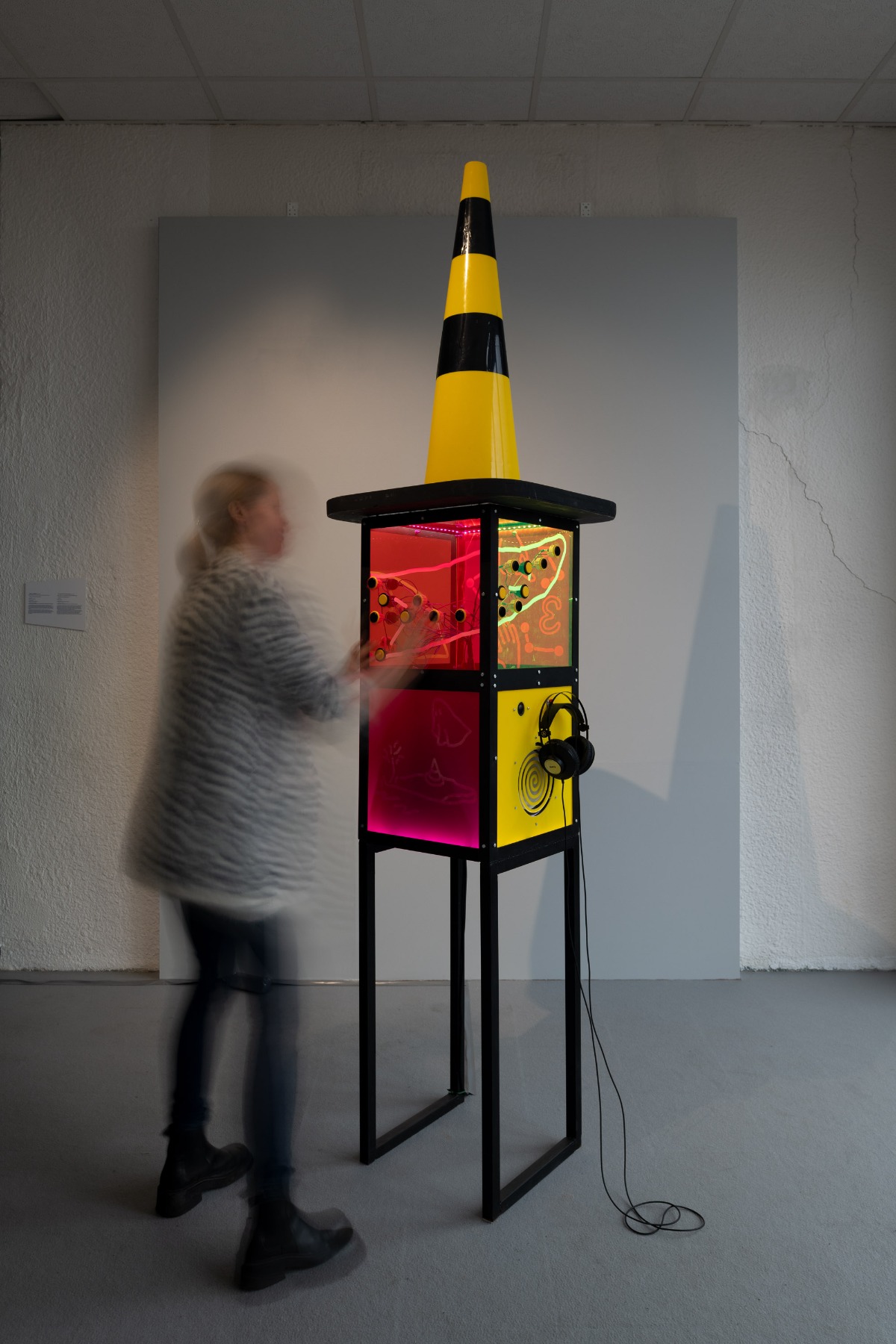
Housed in the Aparaaditehas cultural center, a former factory transformed into a vibrant cultural hub, the exhibition invites visitors to explore a metaphorical superorganism. The artworks will be displayed in various galleries and public spaces throughout the building, including Kogo gallery, TYPA Balcony gallery, Fahrenheit 451 bookshop, AG47 gallery, Red Wall gallery, Sofa Office and other public spaces, creating an immersive experience that encourages reflection on co-existence, sustainability, unity, and individuality.
We asked Brigita Bareikytė (Lithuania), the Curatorial Team Leader, for details about the project and exhibition.
Anna Zvyagintseva, The Roof. Photo: Marje Eelma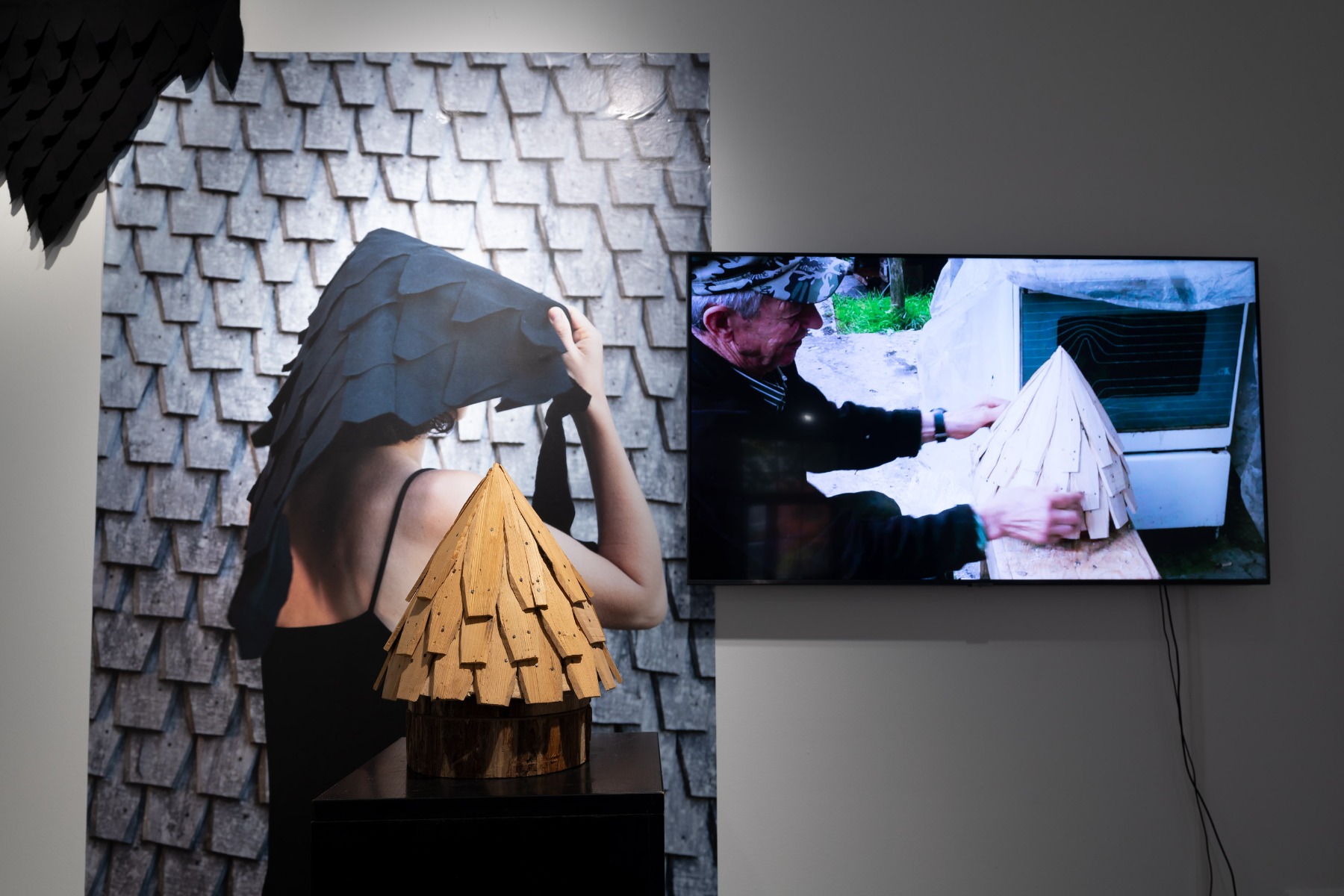
How do you understand the term ‘superorganism’? Why was it chosen for the exhibition?
The term ‘superorganism’ was introduced more than a century ago to describe social insect colonies because of the degree to which their members appeared to operate as a unit. Even though the standard example of a superorganism is an ant colony, there are many others – termite mounds, beehives, coral reefs, fungal colonies, groves of genetically identical trees. Thinking onwards, the human body may be considered a superorganism, wherein a communal group of human and microbial cells are working for the benefit of the collective.
Human beings have always been mythmakers. We use metaphors and stories to explain our surroundings, to place our lives and endeavours in a larger setting, and to create sense and value in a world seemingly ruled by chaos and chance. Myths are stories that represent our search for truth, meaning and significance. This is why the metaphor of superorganism was chosen as the title of the exhibition.
Superorganism is essentially characteristic of the Magic Carpets platform, whose four years of activities are showcased in the exhibition. The participation in the platform is based on horizontality. The platform unites twenty-one members and partners from different European countries, providing opportunities for emerging artists to undertake residencies in partner countries and create new works that highlight regional specificities. Members each have their own agency, characteristics and stories to tell, but they share the same air, which carries oxygen through their circulatory systems.
Superorganism is also the metaphoric representation of community as a unit. The very key starting point of each residency organised within the Magic Carpets platform is community involvement in the co-creative processes of the artworks. Each artist is invited to collaborate with local communities and implement the projects together with people who create new opportunities for audience development and inclusivity.
True to its title, the Superorganism exhibition is unique in that it has been curated by a team of 7 emerging curators from 7 different European countries and a professional mentor curator, mirroring the diversity and horizontal decision-making approach embedded in the Magic Carpets platform.
Within this framework, Superorganism represents a utopian ideal of unity and harmony. But a valid question arises from such theories: in creating such a metaphysical being, what happens to individuality, and what are the risks of interpreting these concepts too rigidly? We leave these questions open for the visitors of the exhibition to stimulate the critical thinking of the audience.
Laura Põld. Outlook. Photo: Marje Eelma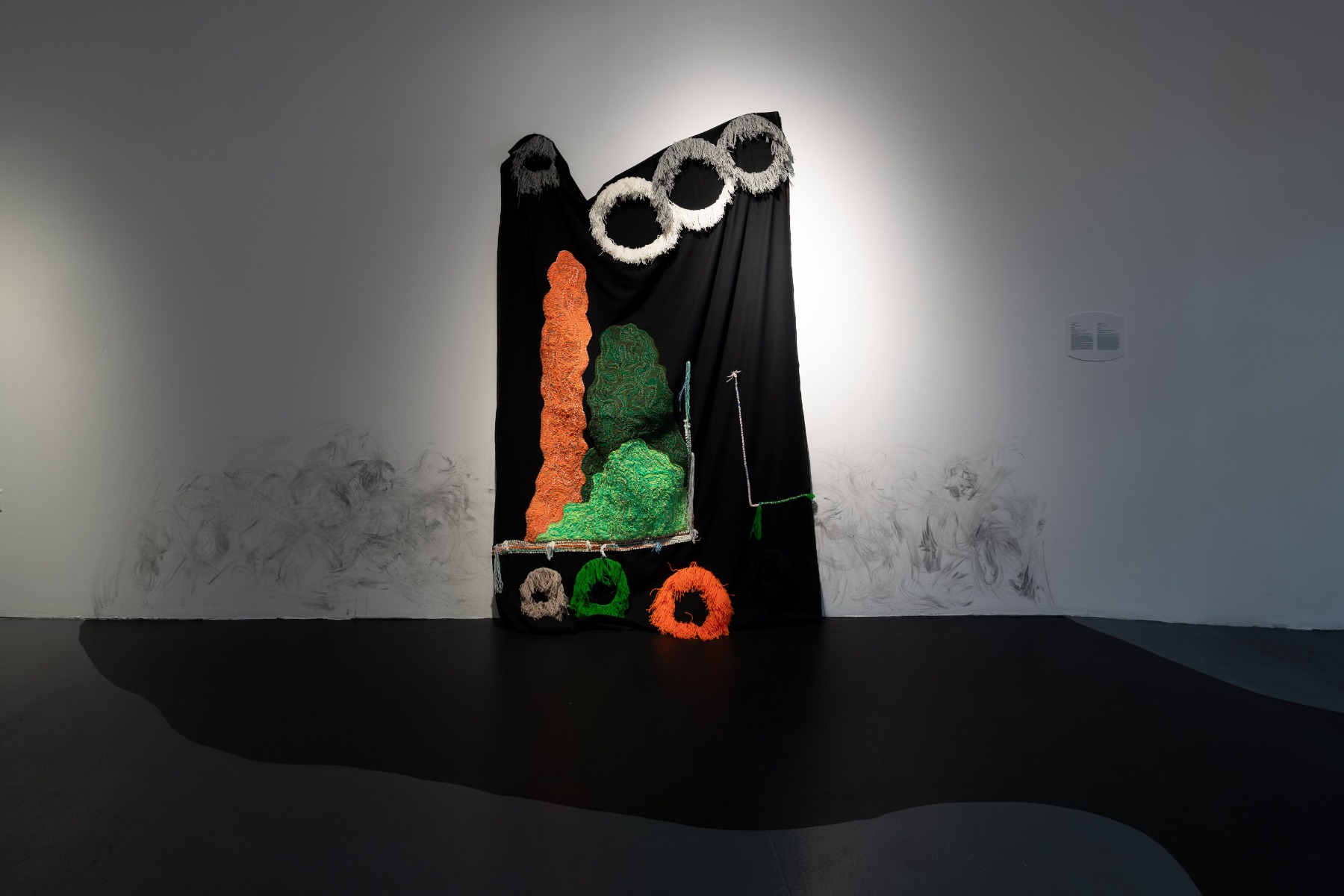
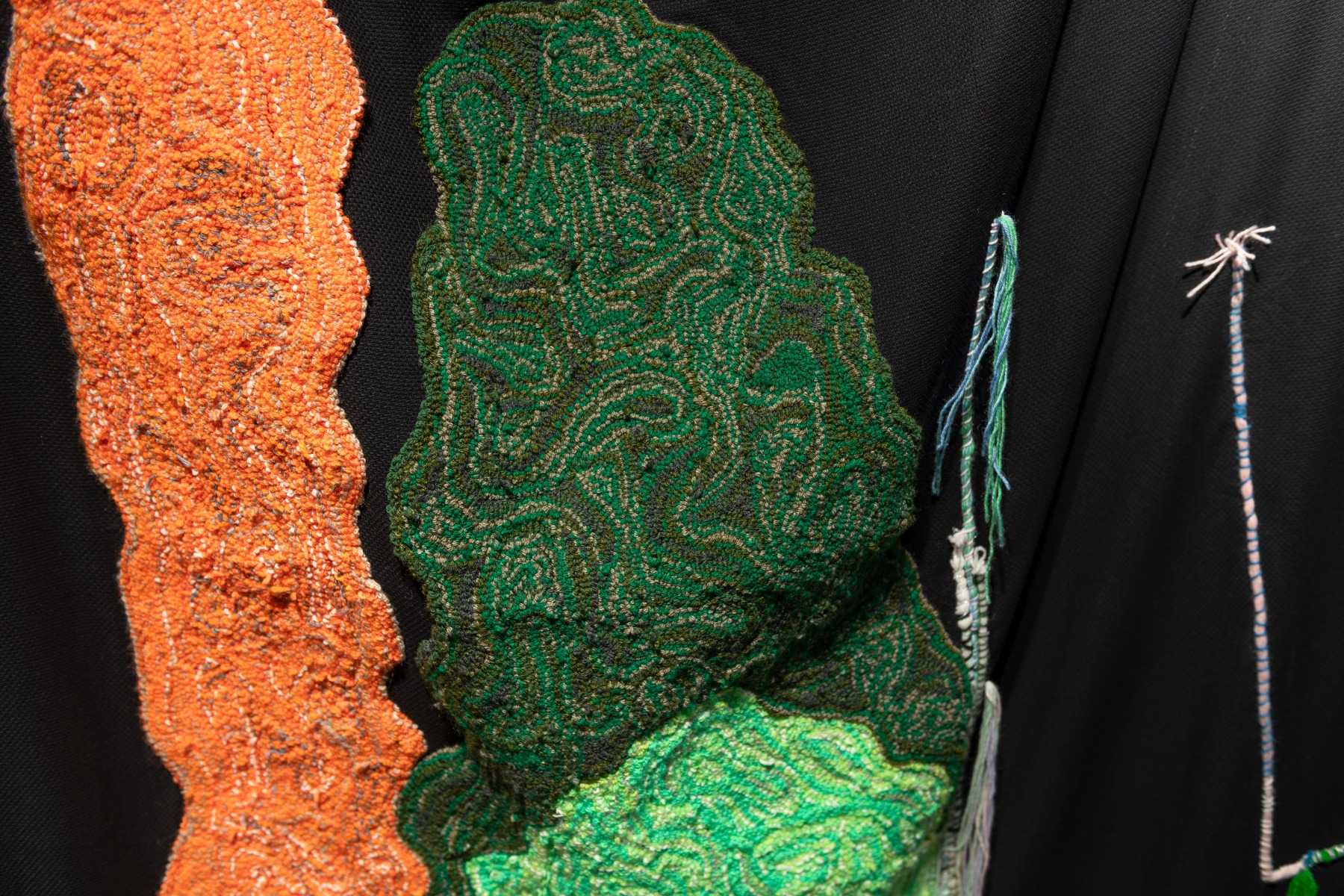
How does this ‘superorganism’ concept work within the framework of the European Capital of Culture, Tartu 2024?
The concept of a superorganism, which invites one to a shared ground of collective existence, is aligned with the values of Tartu 2024: uniqueness, sustainability, awareness and co-creation. Within the Magic Carpets platform, it is common to emphasize the diversity of communities across Europe, and the concept of Superorganism draws attention to their environments. It encourages the nurturing of an equal relationship between human and non-human communities and raises awareness of sustainability. The concept also acknowledges the problems caused by human actions and highlights the importance of recognizing the diverse shapes and parts that make up our interconnected systems. The Arts of Survival, the main concept of Tartu 2024, is also reflected in Superorganism. Each artwork in the exhibition, co-created by artists and community members from across Europe, addresses politically and socially sensitive topics through creativity, inviting the audience to engage in critical thinking and become more aware of the challenging times we live in.
In a time of global challenges, the exhibition encourages us to learn from the utopian concept of superorganism and envision a better future through unity and collective action.
In a time of global challenges, the exhibition encourages us to learn from the utopian concept of superorganism and envision a better future through unity and collective action.
Sandro Sulaberidze. Images Fade From the Light. Photo: Marje Eelma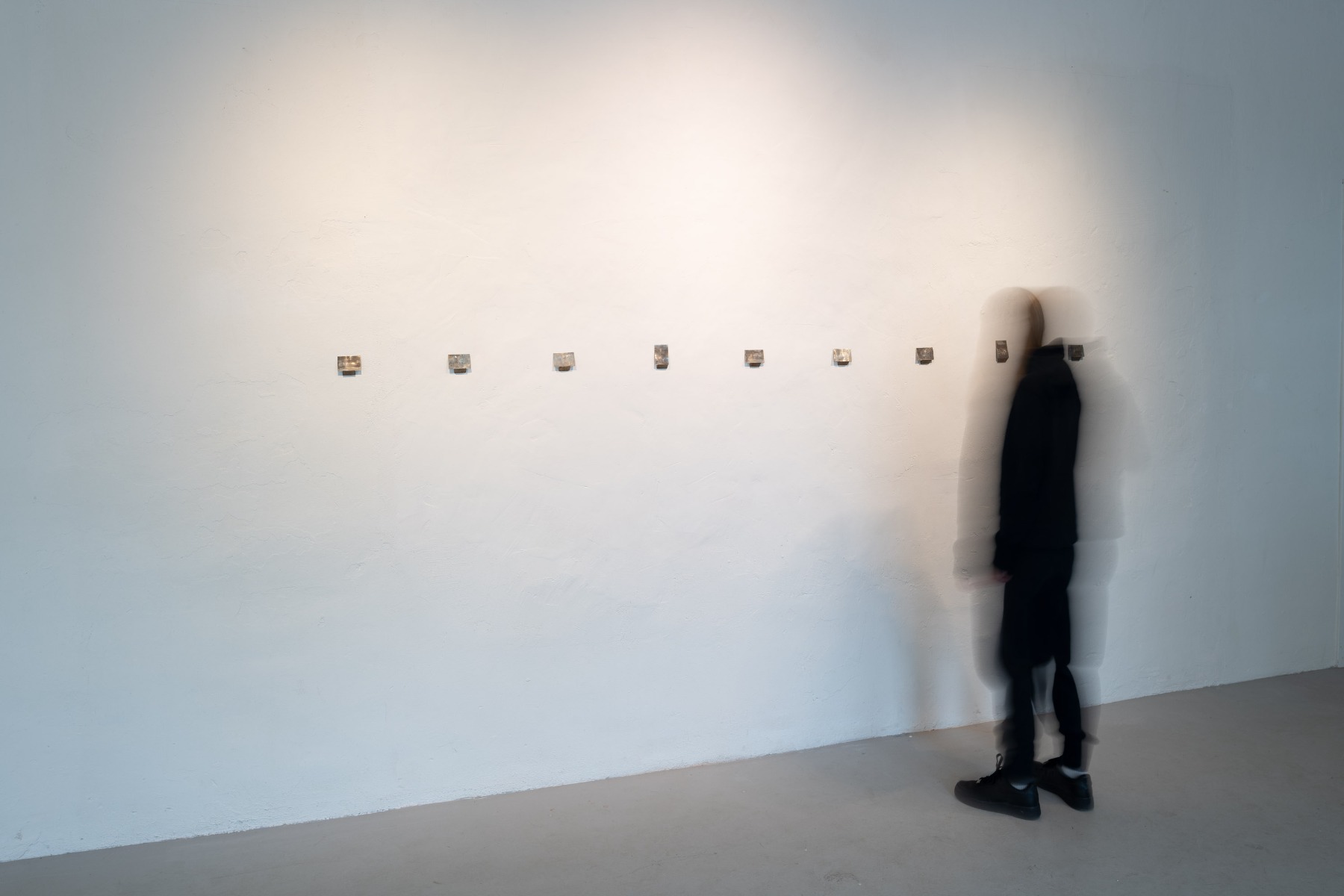
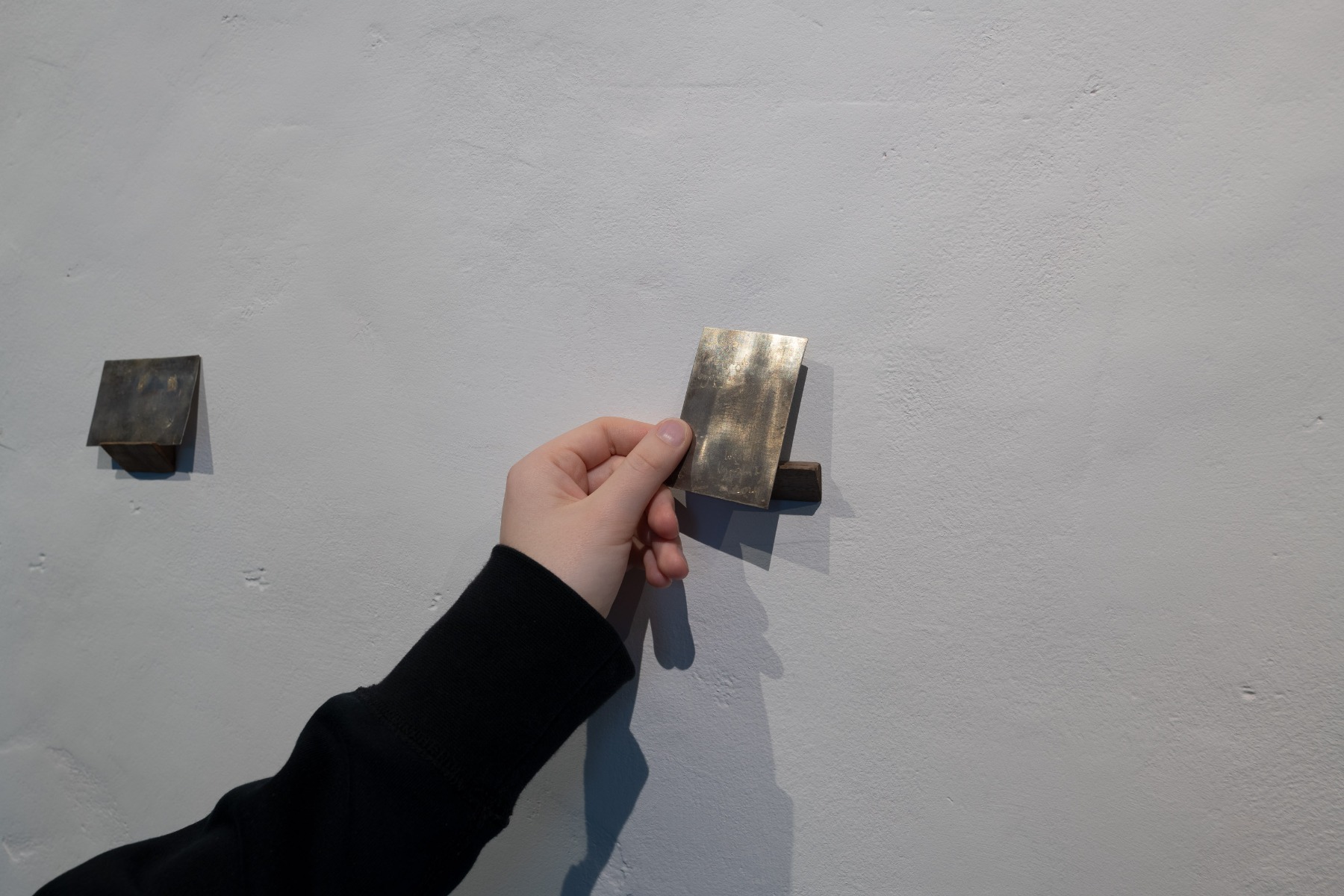
The exhibition showcases diverse artworks by 25 emerging artists who participated in the “Magic Carpets” residencies between 2021 and 2024. But are they truly forming a “Superorganism” in any way? What unites them? Can we identify any common features of this generation?
Every artwork or project presented in the exhibition is co-created by emerging artists together with the local communities across Europe, and they all question and deal with topics relevant today. The exhibition also documents more than 200 residencies conducted within the platform between 2021 and 2024, curated by more than 20 emerging curators and involving more than 3000 community members. This showcases the large scale of the Magic Carpets platform, as well as its impact and legacy.
This question is best addressed by the following quote from the curatorial Superorganism text by Marija Kamber, Paola Farfaglio, Brigita Bareikytė and Ann Mirjam Vaikla (available in Superorganism Storybook):
“Superorganism, while existing collectively, and striving for the best, still understands the dangers of its body. It feels guilty and self-critical about the problems its insides have caused. It understands that it is easy to forget about how many different shapes and parts its body can have: human social structures, animals, plants, living organisms, machinery and artificial intelligence – everything is intertwined.
During these uneasy times, when humanity is experiencing countless strange, awful and bewildering challenges, such as pandemics, wars and eco-catastrophes, we as human community members can contemplate this idea of Superorganism, learn from it, and let it help us dream of a better future. Superorganism can be a unity in resistance to injustice and crimes. But we need to create and embrace this unity.”
Modesta Jakeliunaite, Elina Matvejeva. Kengarags Meeting Map. Photo: Marje Eelma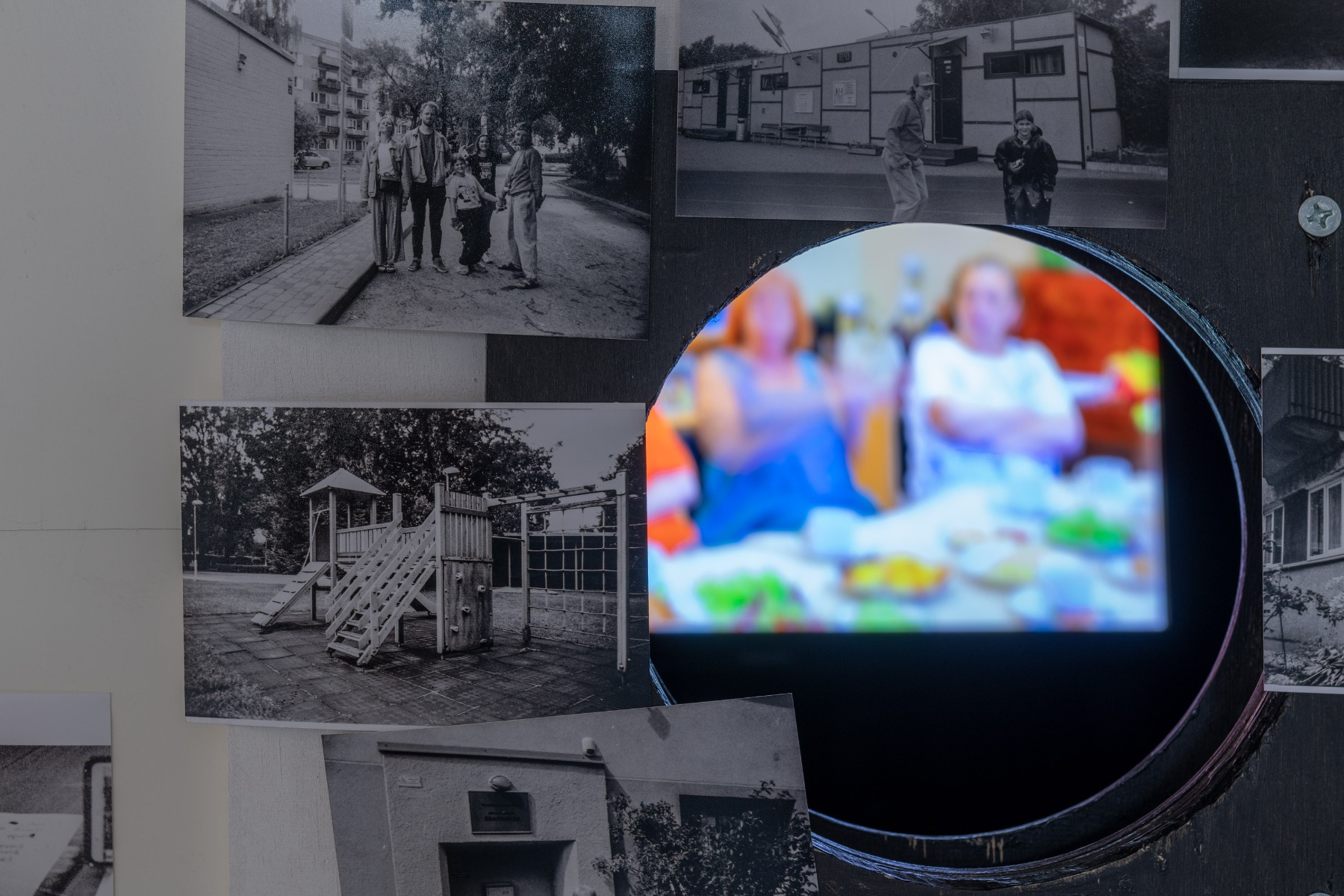
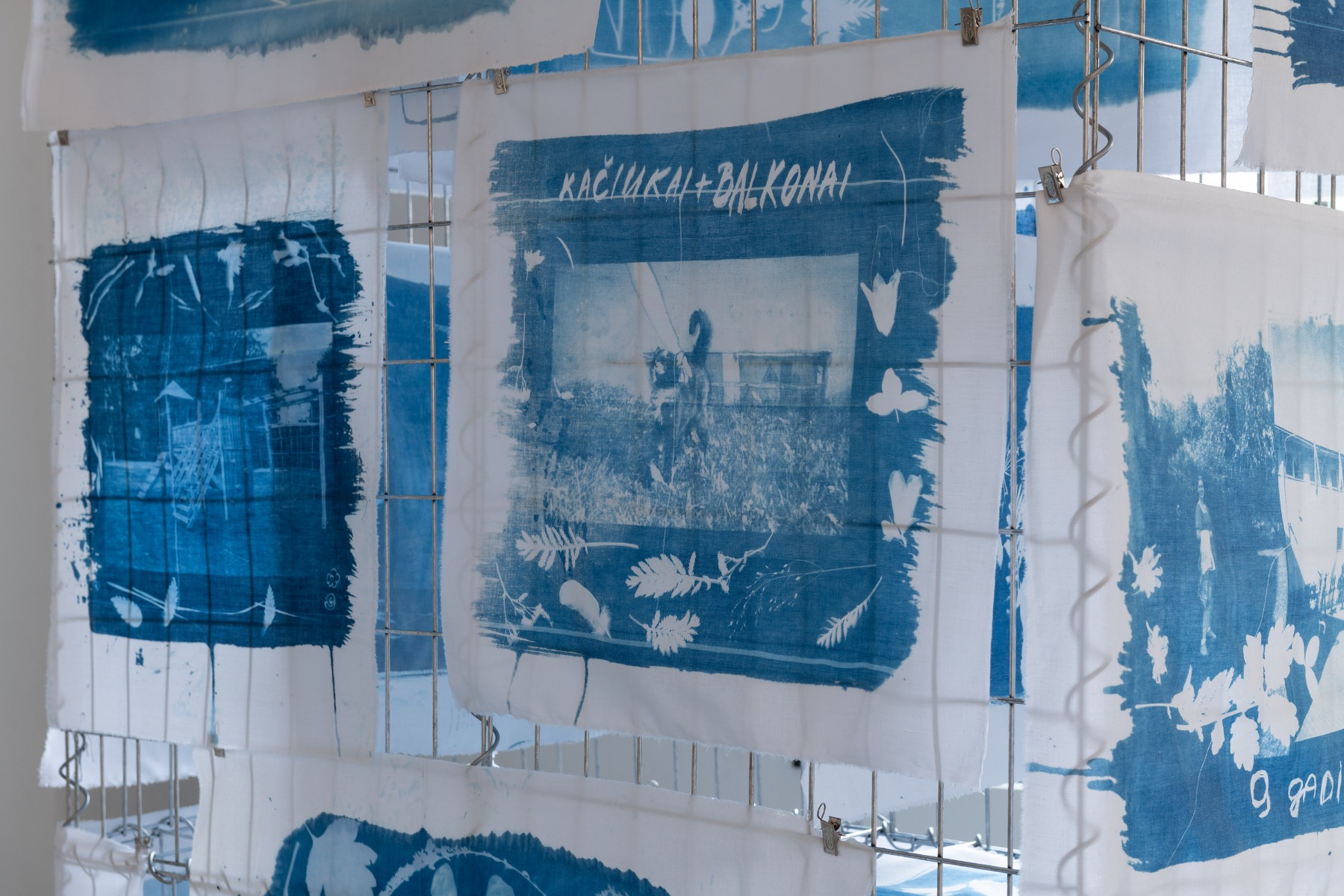
Superorganism found its home within the walls of Aparaaditehas, a former factory with a layered history. Did the location and its past influence the exhibition in any way?
Aparaaditehas is a cultural and creative center located in Tartu, Estonia whose name translates to “apparatus factory" in English. It is housed in a former factory building that has been converted into a space for studios, events, exhibitions, workshops, and performances. The center is known for its vibrant cultural scene. During the Soviet times, the factory was used for manufacturing refrigeration equipment and secret submarine parts. To mislead the public, it also manufactured non-functioning umbrellas and zippers.
The complex building’s vibrancy and controversial history made it an ideal choice for hosting the exhibition. Superorganism is located in 12 different spaces all across the Aparaaditehas, creating an immersive experience for the audience to wander around the labyrinthine center, as they follow the exhibition’s pathfinding system. The exhibition not only collaborates with local galleries such as Kogo, AG47, Rõdu, and the Fahrenheit 451 bookshop, but also uses unexpected backstage spaces that are usually not open to the public such as corridors, co-working spaces, artists’ studios floor, and outdoor spaces within the building’s courtyard. Each location, unique in origin and purpose, metaphorically represents various body parts of Superorganism: Feet, Brain, Sensory System, Memory, Stomach and many more. These spaces reflect on themes of coexistence, sustainability, unity, and individuality, questioning the qualities, challenges, and pursuits of each 'organ.'
The distinctive qualities of the Aparaaditetahas building add new layers to the exhibition, enhancing the visitor’s experience and inviting the public to feel like part of Superorganism themselves.
Sunny Nwume and Berta Tilmante. Corvialismo. Photo: Marje Eelma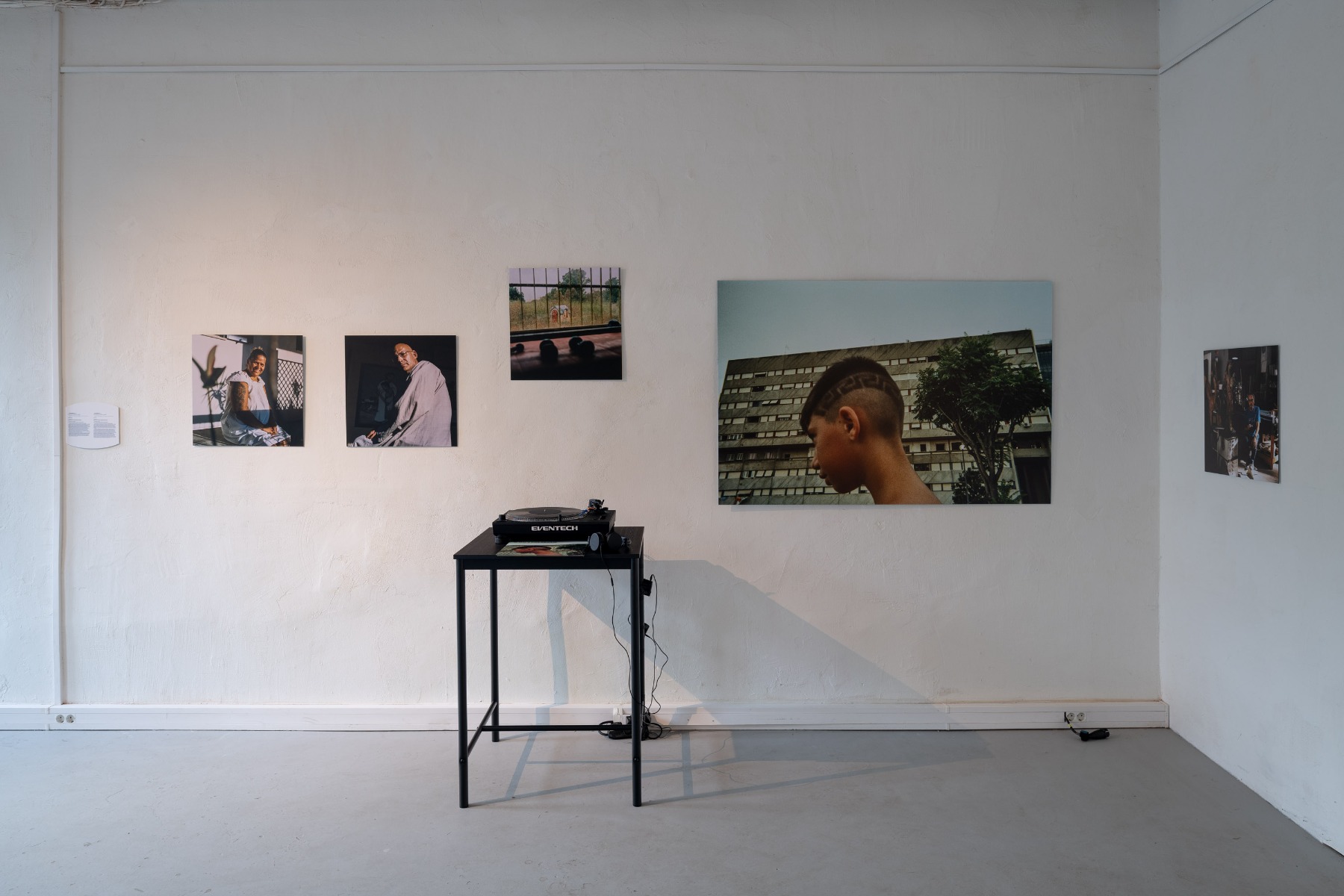
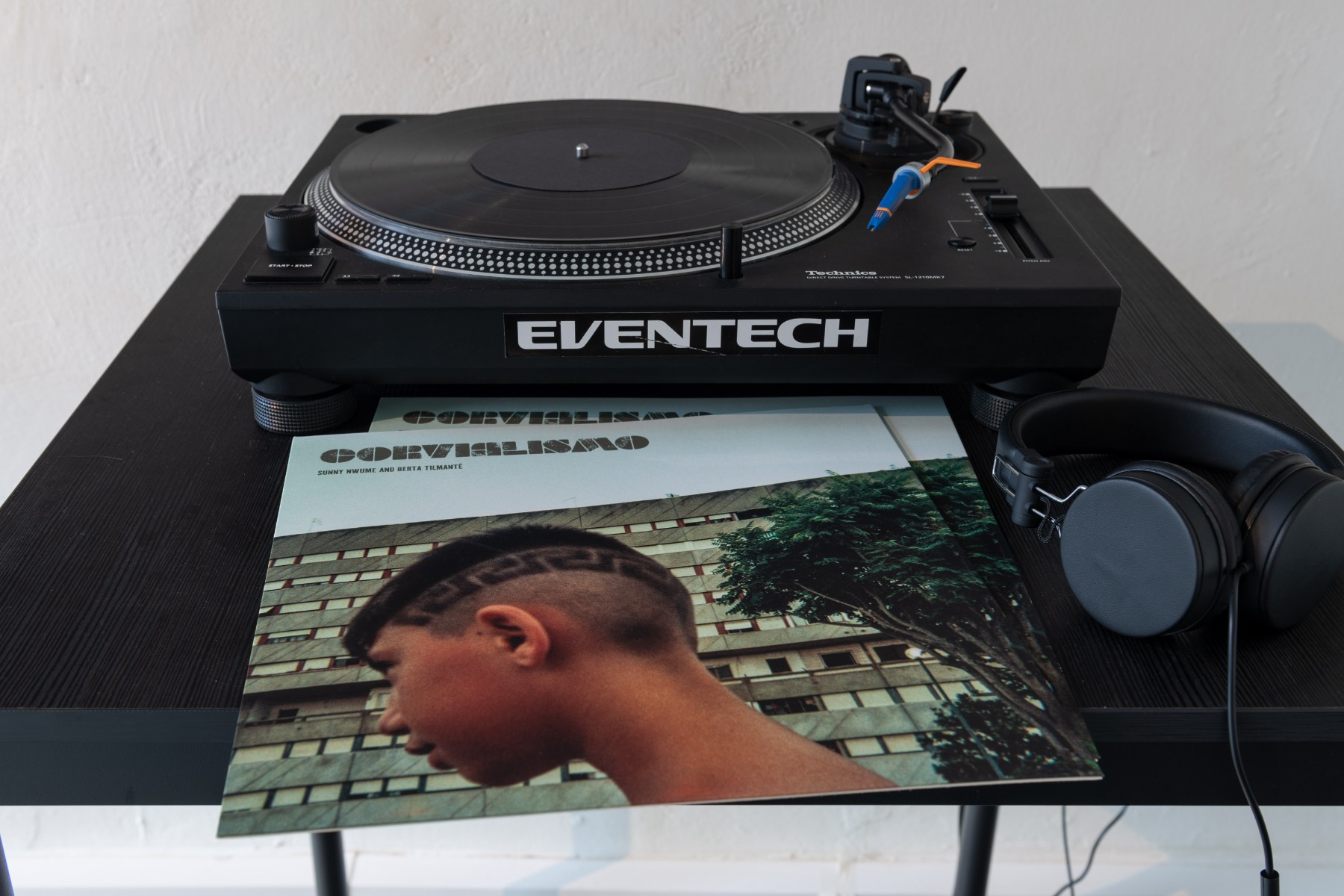
Artists
Laura Adel (Poland), Luca Bitchikashvilli / Lucrezia (Georgia), Janko Bozovic (Serbia), Carmen Brucic (Austria), Mary Conroy (Ireland), Thomas Durand (France), Fernando Ferreira (Portugal), Barbara Gryka (Poland), Anica Huck (Germany / Italy). Modesta Jakeliūnaitė (Lithuania), Agata Konarska (Poland), Gary Markle (Canada / Estonia), Elīna Matvejeva (Latvia), Morra Ceramics (Anastasia Vishynakova and Yana Guselnikova) (Ukraine), Sunny Nwume (Nigeria / Italy), Open Place (Yuriy Kruchak and Yulia Kostereva) (Ukraine), Paprat Kolektiv (Iva Peručić and Maja Subotić) (Croatia), Laura Põld (Estonia), Pauline Rouet (France), Sandro Sulaberidze (Georgia), Berta Tilmantaitė (Lithuania), Malin Tivenius (Sweden), Siniša Tucić (Serbia), Elena Urucatu (Romania), Anna Zvyagintseva (Ukraine).
Upper image: Vita Malahova. Body of Many